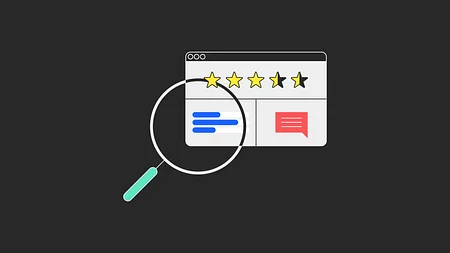Why should insurance companies care about their UX/UI design?

The insurance industry is a tricky beast. With the sector picking up pace in the race to become truly digital, businesses face the challenge of maintaining trust while overhauling how their service is delivered.
That means good UX and UI design have never been more important. Let’s take a look at what companies are doing to keep customers engaged throughout the insurance process. And where the opportunities to do better can be found.
These ideas were discussed in more depth in this episode of the Insurtech Insider Insights podcast.
UX and U-what now?
It’s more than just how colourful your app is. UX refers to the holistic experience of interacting with a service. It’s how your users experience your brand at every available touchpoint. What does it look like? What does it sound like? Are you meeting your customers where they need you? If it all adds up to something memorable then you deserve a slice of cake.
If UX is the house then UI is the furniture. It’s how information is presented to the customer. It’s the colour scheme of the mobile onboarding process. It’s the printout I read on the tube. It’s what my local branch looks like when I pay it a visit. Which I haven’t done in about four years. But you get the idea.
If UX is the house then UI is the furniture.
The terms are used interchangeably a lot these days but it’s an important distinction to draw.
Who’s doing it better? Incumbents or insurtechs?
Well the incumbents arguably have a few more challenges to contend with than their younger counterparts. For starters they have to navigate the shift from product-centric organisation to customer experience-centric one. Which is a blessing and a curse. On the one hand, I just had a nosebleed thinking about overhauling all those legacy systems. On the other, there’s a lot of juicy data in the bank to help shape your UX. So. Swings and roundabouts.
Traditional institutions can also fall back on the fact a lot of people have heard of them. Again, this cuts both ways. The insurance industry has a lot of baggage and once trust is lost it can be difficult to rebuild. Once bitten, twice shy. Insurtechs are starting from scratch sans baggage. It may take longer to establish a customer base in the short-term but it’ll only get easier.
Let’s talk about chatbots
It’s probably fair to say that chatbots remain a bit of an untapped gold mine at present. If you’re interested in how FS companies might harness their potential in future, this article is a great place to start.
The problems are twofold. The technology isn’t very developed currently, so a lot of chatbots can only resolve a select number of issues. I’m sure I don’t need to tell anyone how frustrating it is when the answer they’re looking for isn’t on the list. And that ties in with problem number two. FS companies fall down when they offer a chatbot to help with their customers’ queries and nothing else. Speaking to a real flesh and blood human still has its place.
There are also issues of gender and identity to consider. What does your chatbot sound like? Why are most chatbots female? Should chatbots be gendered at all? (Hint: No.) It feels slightly counterintuitive to use cutting-edge technology to enforce power dynamics and fall back on problematic stereotypes. It’s 2021. There aren’t any excuses anymore.
Dos and don’ts
Let’s finish with some dos and don’ts.
Make sure your app is properly formatted for mobile. Say your customer has to input their phone number - a numeric keyboard should come up on screen, not a QWERTY. As far as attention to UI detail goes it seems like small fry, but little things like that add up.
Incumbents should be mindful that maintaining trust is difficult - especially when you’re making big changes to your UX and UI design. Security measures and usage of data can’t take a backseat just because of your shiny new app.
maintaining trust is difficult - especially when you’re making big changes to your UX and UI design.
And don’t go overboard. For older companies that have built up brand capital and goodwill over the years, burning down the house mightn’t be the best idea. Despite what David Byrne says.
And there we go
So that’s UX and UI design and the role they play in building trust for insurance companies. For more on the changing landscape of the insurance industry, check out our Insurtech Insider podcast. We think you’ll really love it.



